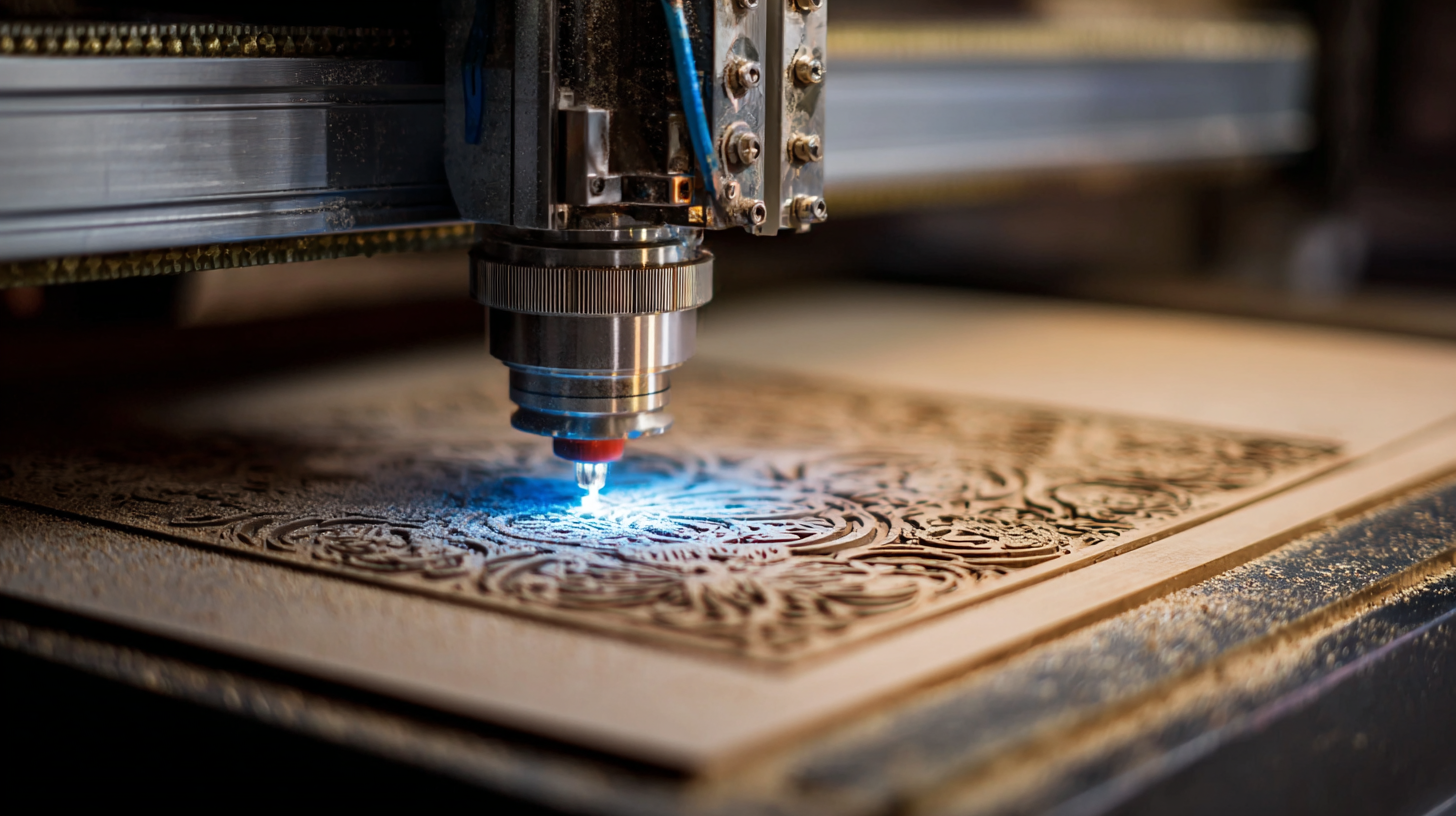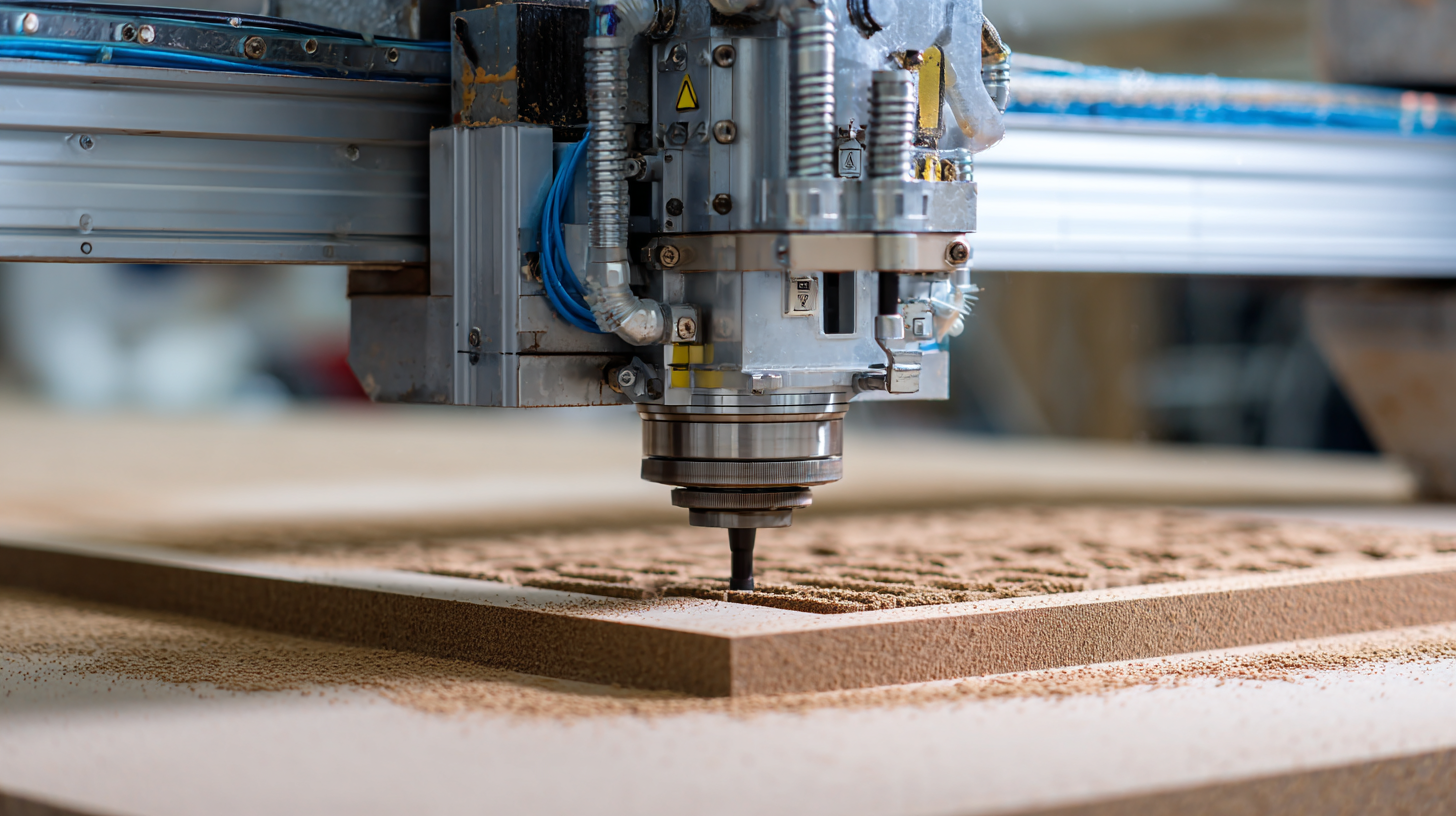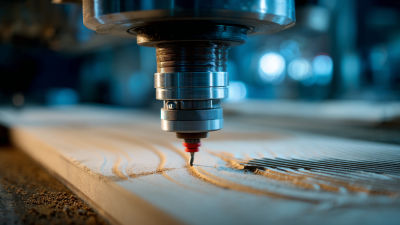 In the realm of woodworking, precision is paramount, and utilizing a Heavy Duty CNC Router has become increasingly essential for professionals aiming to enhance their craftsmanship. According to industry reports, the global CNC router market is expected to reach $2.5 billion by 2026, driven by the growing demand for customized woodworking solutions and automated processes.
Heavy Duty CNC Routers stand out for their ability to handle dense materials while providing superior accuracy, making them integral in commercial woodworking applications. Moreover, they significantly reduce production time and waste, offering a streamlined workflow that can increase overall profitability.
With advancements in technology, these machines not only elevate the quality of finished products but also allow woodworkers to push the boundaries of design and creativity, transforming the woodworking landscape in unprecedented ways.
In the realm of woodworking, precision is paramount, and utilizing a Heavy Duty CNC Router has become increasingly essential for professionals aiming to enhance their craftsmanship. According to industry reports, the global CNC router market is expected to reach $2.5 billion by 2026, driven by the growing demand for customized woodworking solutions and automated processes.
Heavy Duty CNC Routers stand out for their ability to handle dense materials while providing superior accuracy, making them integral in commercial woodworking applications. Moreover, they significantly reduce production time and waste, offering a streamlined workflow that can increase overall profitability.
With advancements in technology, these machines not only elevate the quality of finished products but also allow woodworkers to push the boundaries of design and creativity, transforming the woodworking landscape in unprecedented ways.
CNC routers have revolutionized the woodworking industry by providing precision and efficiency that traditional methods cannot match. These computer-controlled machines utilize cutting tools to carve, shape, and engrain materials with unparalleled accuracy. At their core, CNC routers operate by translating digital designs into physical objects, allowing woodworkers to replicate intricate patterns and complex shapes with ease. This digital interface not only streamlines the design process but also minimizes the risk of human error, resulting in high-quality finishes every time.

Understanding the basic functions of CNC routers is crucial for woodworkers seeking to maximize their precision. These machines are equipped with various features such as automatic tool changers and multi-axis capabilities, enabling them to perform a range of tasks from cutting to engraving on different wood types. Settings like feed rate and spindle speed can be adjusted to suit specific project requirements, ensuring optimal results. By harnessing the capabilities of CNC routers, woodworkers can elevate their craftsmanship, producing consistent and detailed work that meets the demands of both aesthetic appeal and structural integrity.
Heavy duty CNC routers have become essential tools in precision woodworking projects, offering a range of advantages that elevate craftsmanship to new heights. According to industry reports, utilizing CNC technology can increase production efficiency by as much as 60%, allowing woodworkers to create intricate designs with unmatched accuracy. This technology enables precise cuts and consistent quality, minimizing the need for manual adjustments and errors that commonly arise in traditional woodworking methods.
In addition to enhanced precision, heavy duty CNC routers allow for greater versatility in project execution. Whether you're looking to carve detailed patterns or create complex shapes, the ability to program specific designs ensures that each piece produced meets the desired specifications perfectly. Recent recommendations for CNC wood carving machines highlight models that support a variety of materials and thicknesses, making them invaluable for different woodworking applications. By investing in a capable CNC router, woodworkers can not only expand their creative possibilities but also significantly improve turnaround times for client commissions, making it a smart choice for both hobbyists and professionals alike.
When searching for a heavy-duty CNC router for your workshop, it’s crucial to consider key features that will enhance precision and efficiency in woodworking tasks. One of the foremost aspects is rigidity; a robust frame minimizes vibrations, ensuring that cuts are clean and accurate. Look for a machine that boasts a solid construction and high-quality components to withstand rigorous use, especially when working with dense materials.
Another essential feature is the power of the spindle. A powerful spindle allows for faster cutting speeds and the capability to handle a variety of tools, increasing versatility. Additionally, consider routers with advanced software compatibility that streamlines the design process and enhances user control. Features such as built-in dust collection systems and larger work areas can also significantly improve your workflow, allowing for more extensive projects without the need for constant repositioning. Investing in a CNC router with these elements ensures that you achieve maximum precision and efficiency in your woodworking endeavors.

When working with a heavy-duty CNC router, achieving heightened accuracy in woodworking projects hinges on optimizing various settings. Begin by calibrating the router’s speed and feed rates according to the material being used. Experimenting with these parameters can lead to better control over the cutting process, minimizing the risk of tear-out or chipping. Using slower speeds with hardwoods, for instance, allows for a cleaner cut by reducing friction, which can produce heat and affect the tool’s performance.
In addition to speed adjustments, tool selection plays a pivotal role in precision. Choose high-quality, sharp bits specifically designed for woodworking to ensure fine detailing and smooth finishes. Furthermore, adjusting the depth of cut can also enhance accuracy; shallower cuts often yield cleaner edges and are less likely to cause tool deflection. Lastly, implementing a proper clamping method ensures that the workpiece remains stable throughout the machining process, preventing any unwanted movement that could compromise precision. By carefully fine-tuning these settings, woodworkers can significantly enhance the overall quality of their projects.
| Parameter | Standard Value | Recommended Setting | Impact on Precision |
|---|---|---|---|
| Cutting Speed (mm/min) | 2000 | 1500 | Improved edge finish and less chipping |
| Feed Rate (mm/min) | 1200 | 1000 | Ensures better depth of cut and accuracy |
| Bit Diameter (mm) | 6 | 3 | Greater precision on intricate designs |
| Path Optimization Strategy | Standard | Adaptive | Reduces processing time and enhances accuracy |
| Material Type | Plywood | Marine Plywood | Better durability and finishing results |
In the realm of woodworking, harnessing the precision of a heavy-duty CNC router can significantly amplify productivity and quality. However, navigating its use comes with a set of common pitfalls that can derail even the most ambitious projects. It's crucial for woodworkers to avoid mistakes such as improper calibration, where the CNC machine is not adequately set up to ensure accurate cuts. Neglecting proper maintenance can also lead to decreased performance and increased error rates, undermining the overall precision of the work.
Another frequent issue arises when users underestimate the importance of selecting the appropriate tooling and feed rates. Using the wrong bits or incorrect speeds can lead to poor finishes and wasted materials. Woodworkers should also be mindful of the software used for design, as inadequate programming might produce flawed designs that do not translate into the physical workpiece accurately. By being aware of these common mistakes and focusing on precision, woodworkers can leverage CNC technology to enhance their craft and contribute to the growing market for high-quality wood products.





